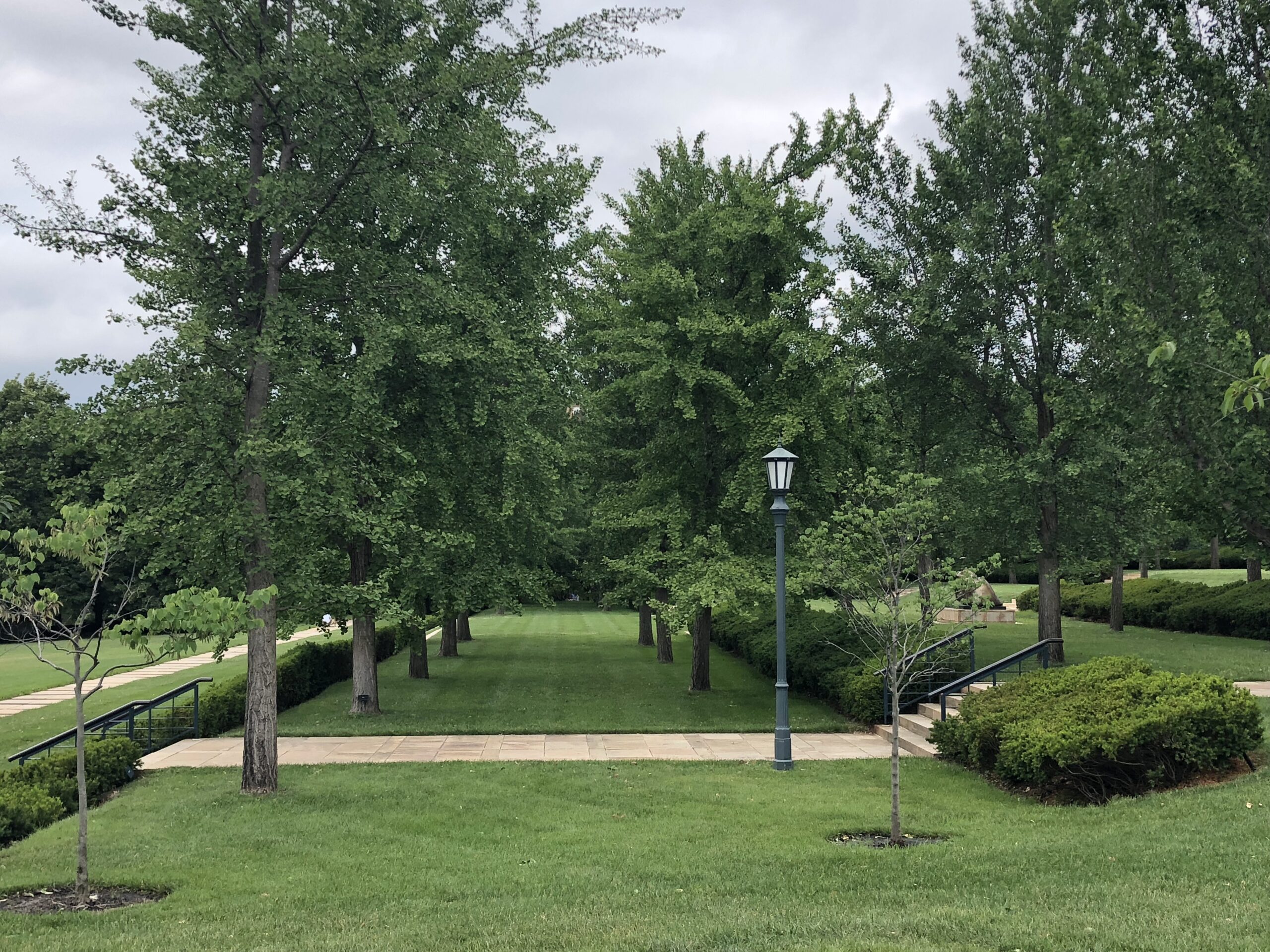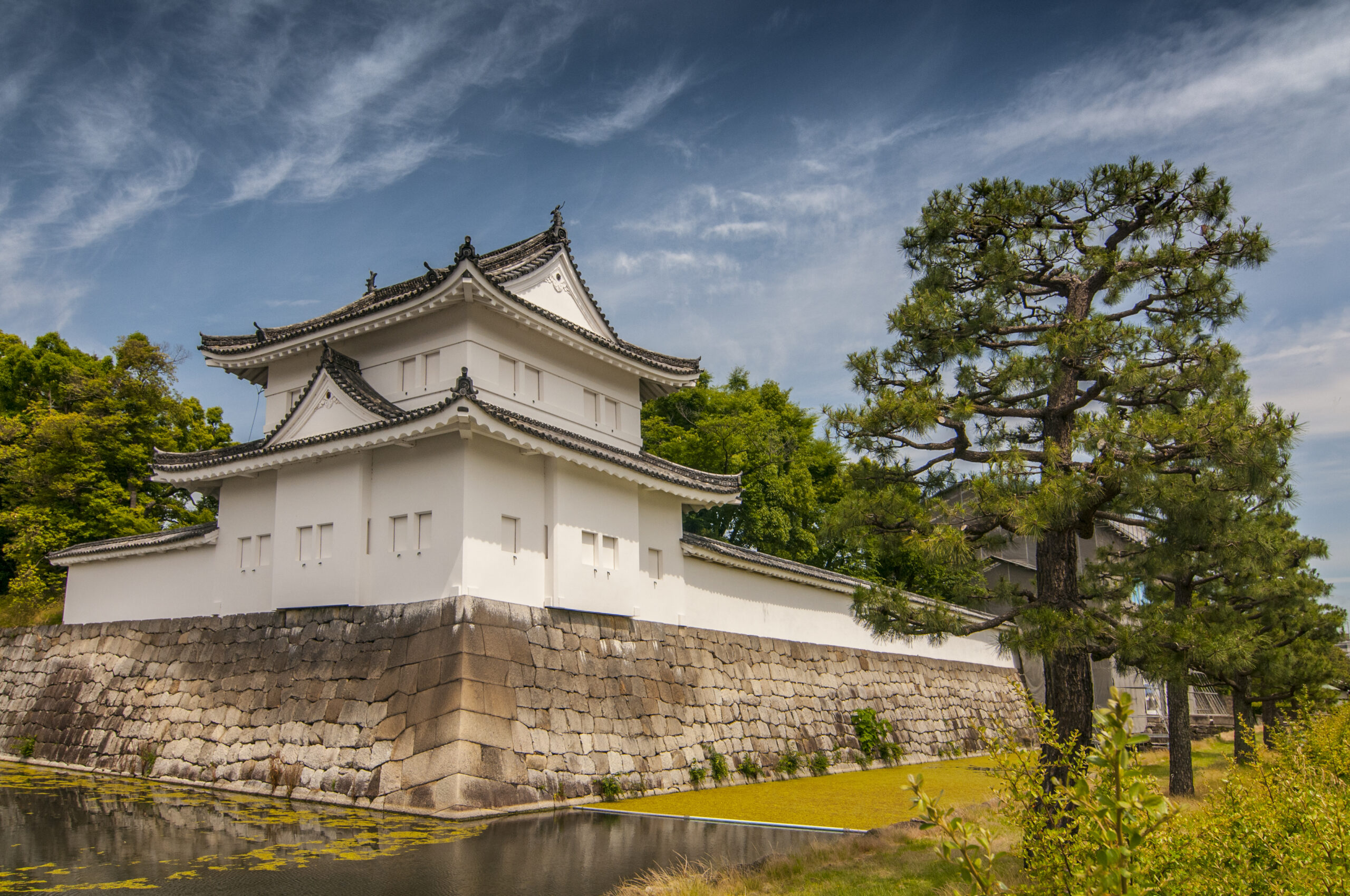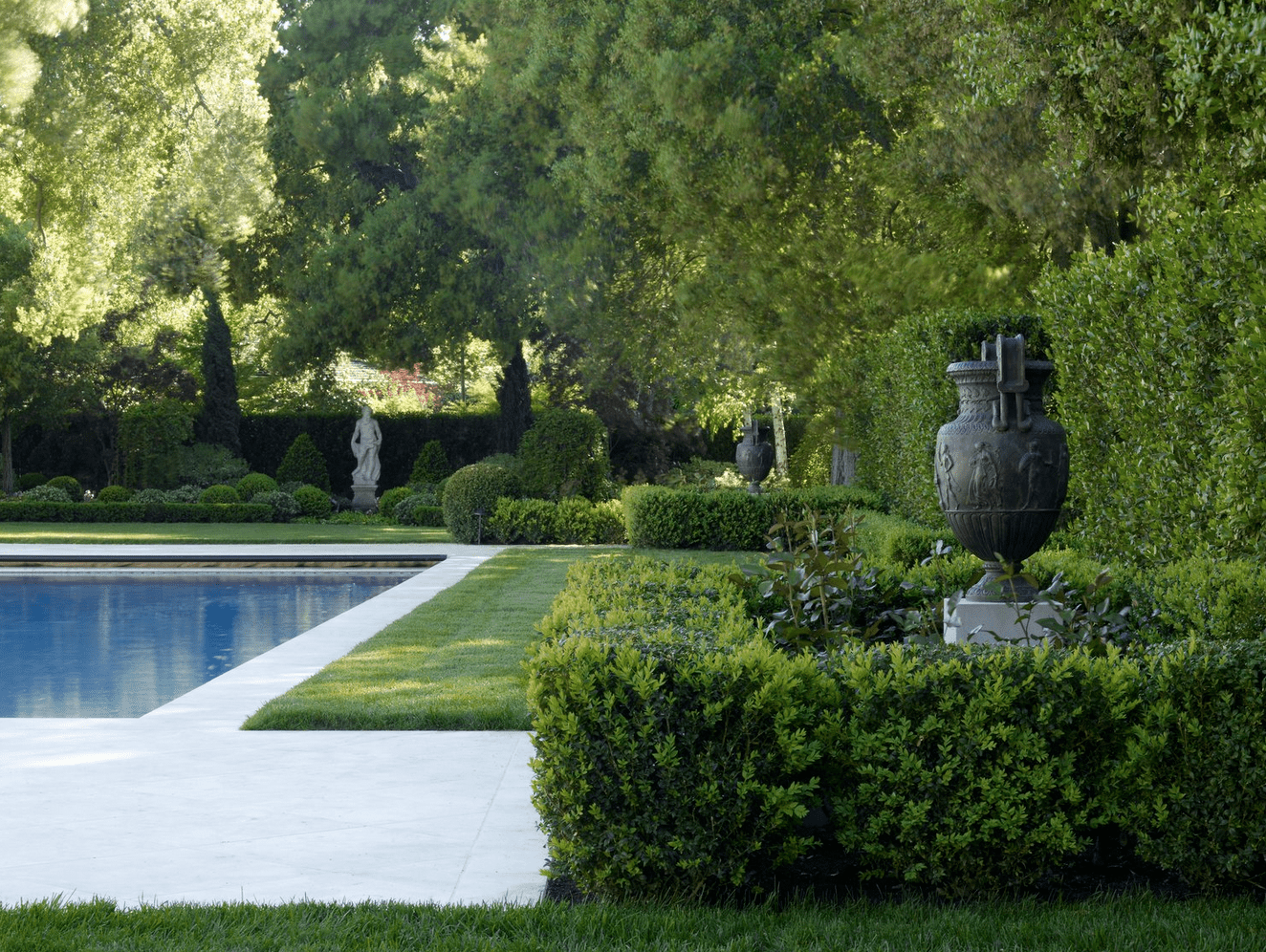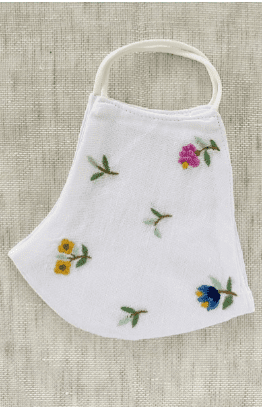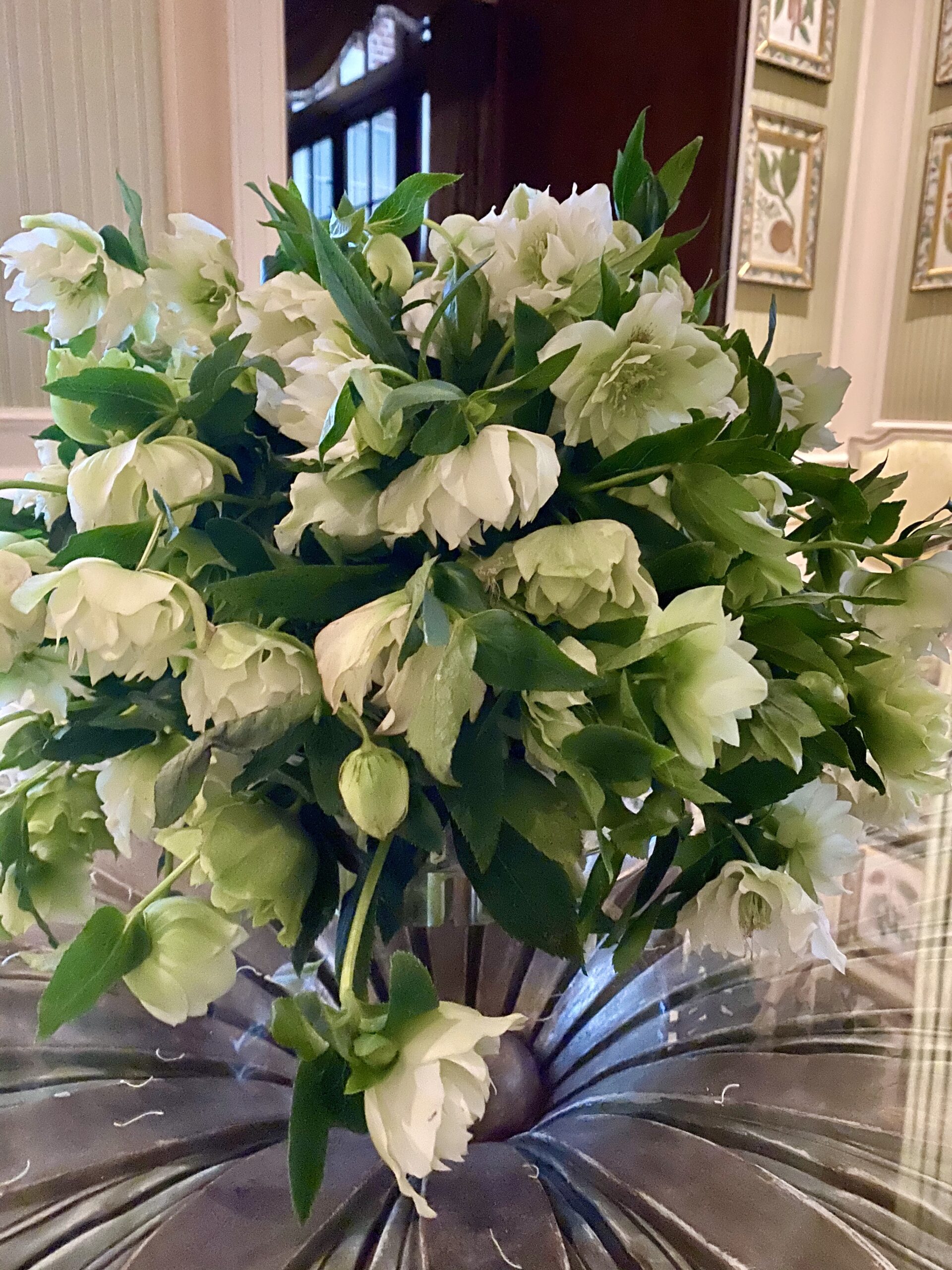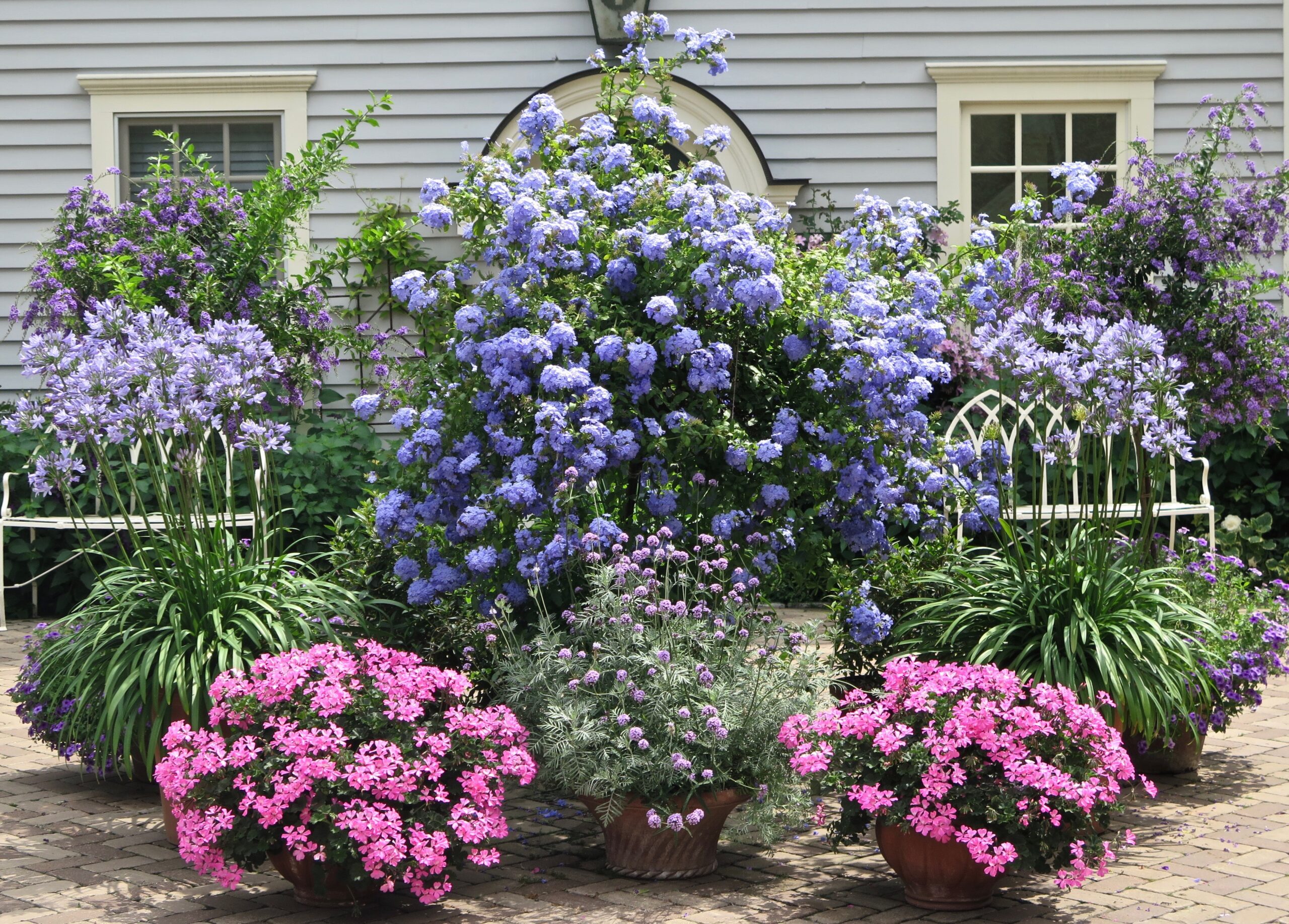Alex and I recently visited Kansas City, Missouri for my niece’s wedding (which was fabulous). During a brief break in the festivities, we had a chance to visit the Nelson-Atkins Museum of Art.


A word about the museum if you’re not familiar with it: The new Bloch Building (part of the museum, shown above) was voted as #1 on Time Magazine’s list of the Top 10 “architectural marvels” in 2007.
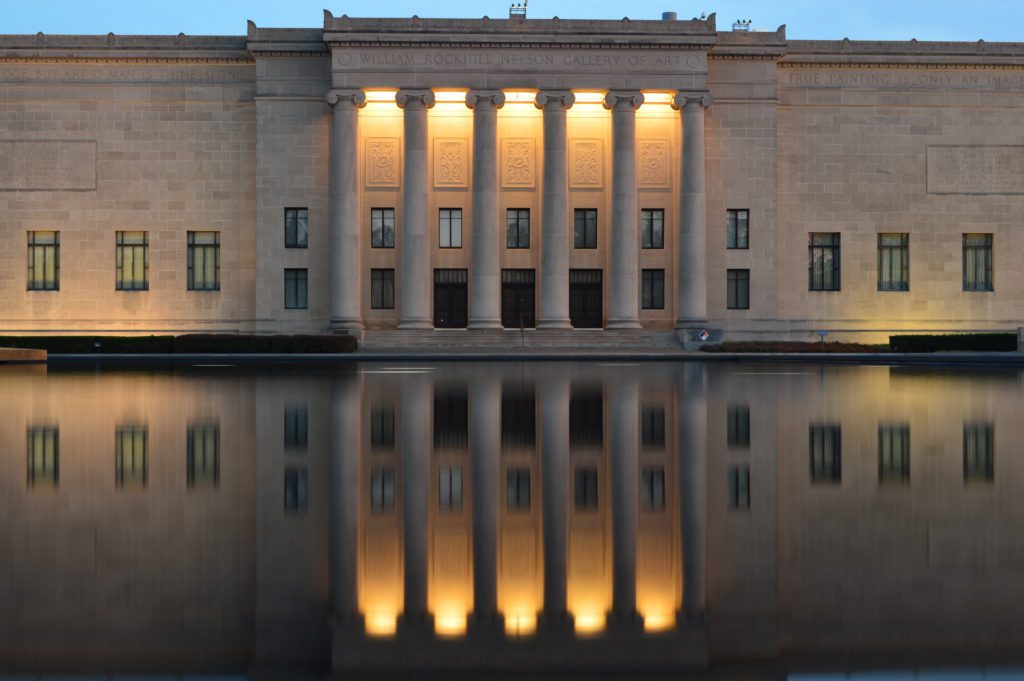

The Nelson-Atkins Museum has a rich history of philanthropy, beginning with the donation of the land and estate of Kansas City Star publisher William Rockhill Nelson in 1915. At about the same time, Mary McAfee Atkins donated $300 million to establish an art museum on the site. The money was well managed and quickly grew to $700 million in 1927, prior to the Crash.


During the Great Depression, the worldwide art market was flooded with art for sale, but there were very few buyers. So, the museum’s buyers found a vast market open to them. They capitalized on this opportunity and acquired a large collection of art during this period, Nelson-Atkins becoming one of the largest art collections in the country. Today it is known for its prized collection of European & Asian (especially Imperial Chinese) art, as well as contemporary sculpture.
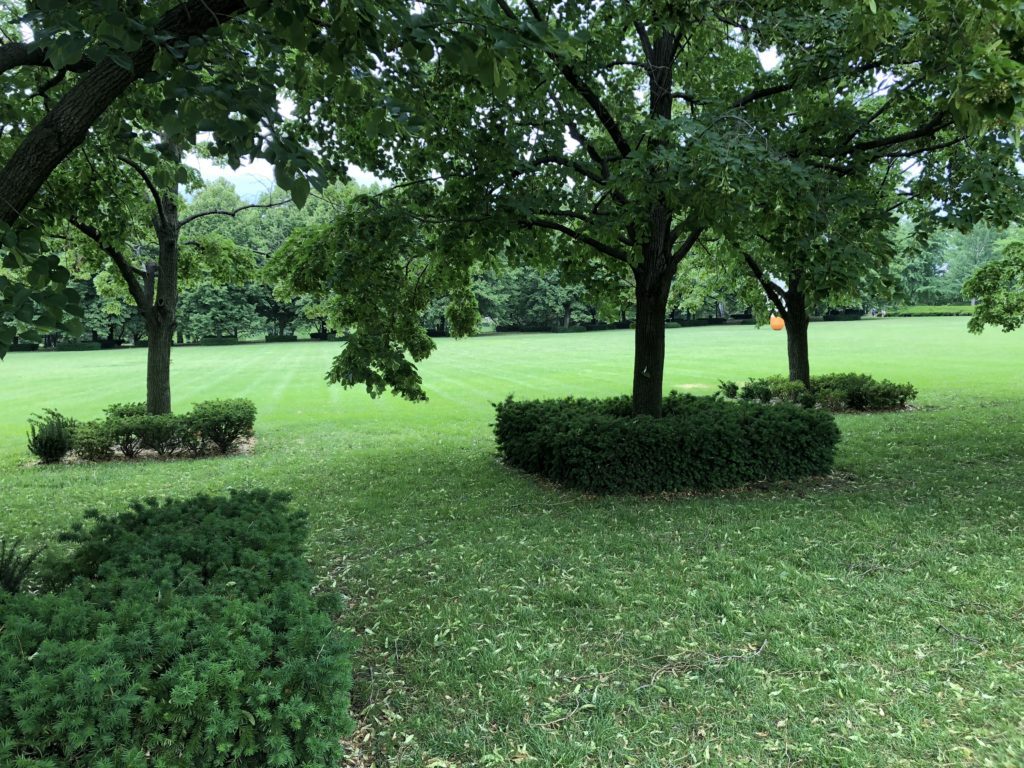

What immediately caught my attention when we arrived was the bucolic setting for the museum. The park was originally designed by Dan Kiley and architect Jaquelin Robertson from the famed Cooper, Robertson & Partners in NYC.
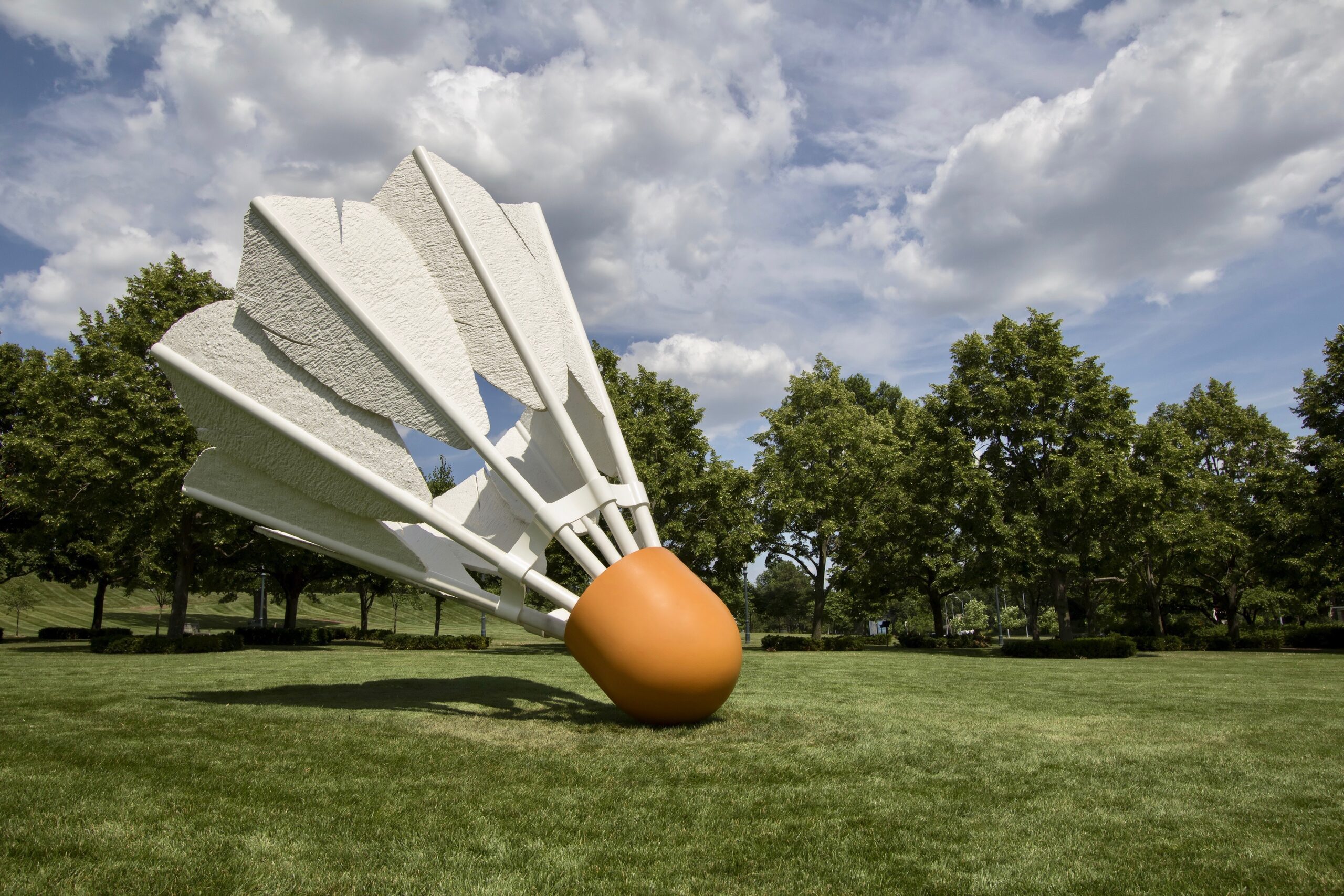

“Kiley and Robertson created a grand, formal mall on seventeen acres, the axis of which frames a southern vista of Bush Creek. Broad limestone steps extend from the building’s portico and descend through lawn terraces that are separated by sloping banks, planted with Japanese yew and rows of ginkgo trees. Below the terraces, a broad central lawn is edged by parallel allées of Redmond lindens, four rows deep, which shade straight limestone paths. Vine-covered, steel pavilions act as entrances to the picturesque pine and hardwood groves on the perimeter of the allées, vestiges of the museum’s original landscape created by landscape architects Hare & Hare in the 1930s. Moore’s sculptures are set along meandering red brick walks nested within the woods and strategically throughout the formal mall landscape.” (from the Cultural Landscape Foundation website).


The landscaping is GORGEOUS. Depending upon the time you have to visit the museum, you must allow time to walk around the sculpture garden, which houses an extensive collection of Henry Moores. You will be amazed!

